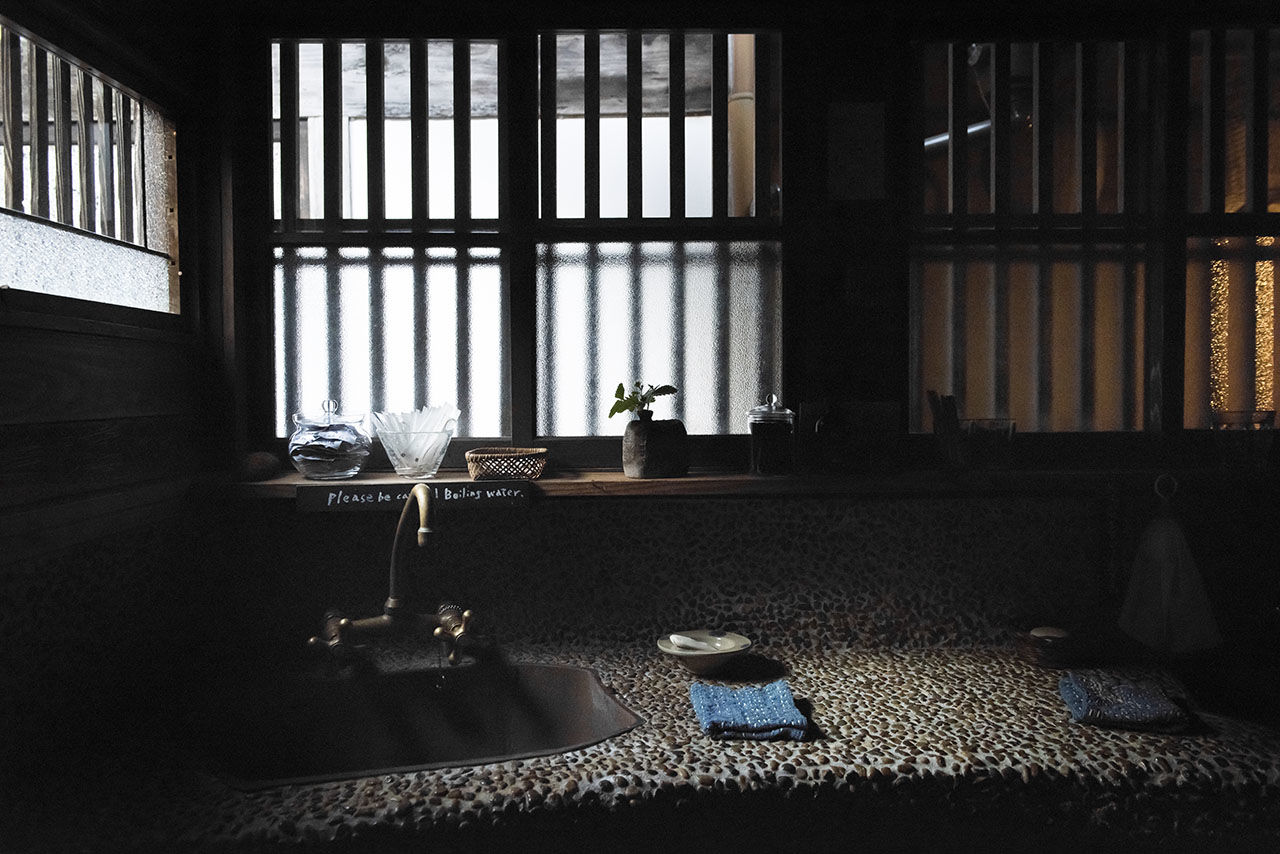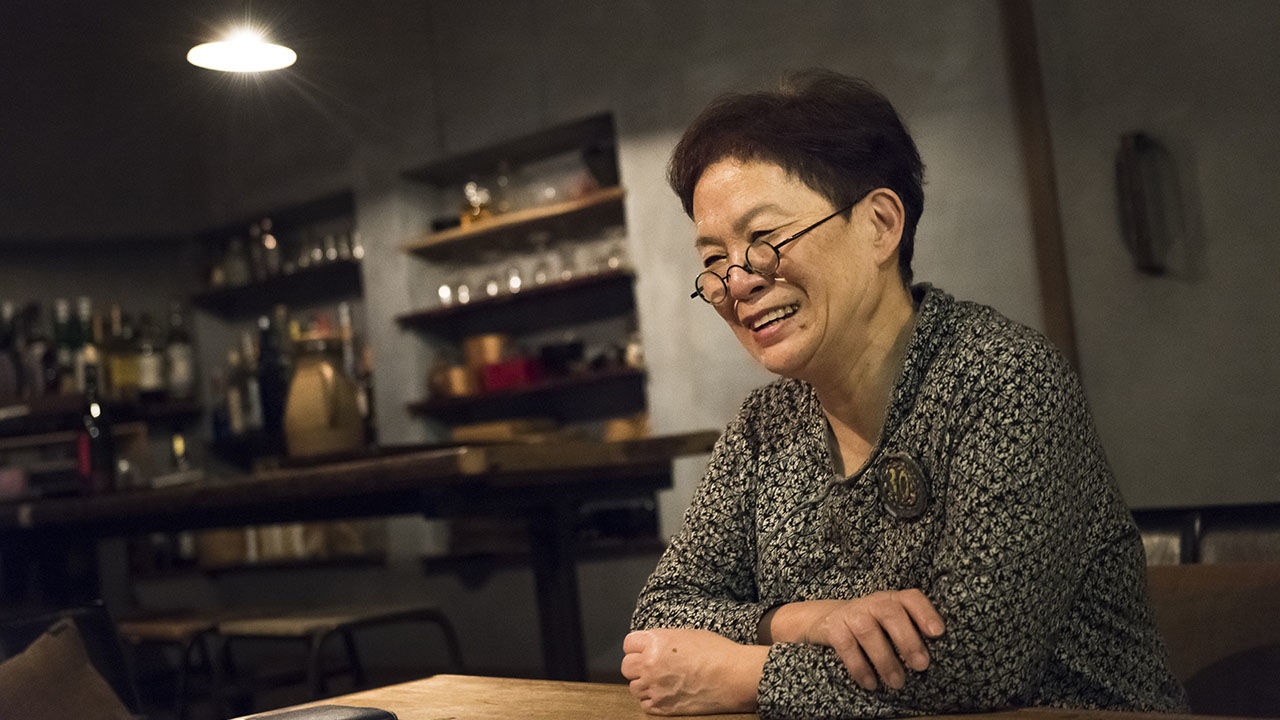
Breakfast Around Japan: A Culinary Adventure
Matsuba Tomi, Entrepreneur and Innkeeper: Saving Japan’s Cultural Heritage One House at a Time
Guideto Japan
Lifestyle Travel Food and Drink- English
- 日本語
- 简体字
- 繁體字
- Français
- Español
- العربية
- Русский
Matsuba Tomi
Chief executive officer of Iwami Ginzan Seikatsu Bunka Kenkyūsho and owner-manager of Takyō Abeke. Born in 1949 in Mie Prefecture. In 1981, moved to her husband’s birthplace, the historic town of Ōmori in Ōda, Shimane Prefecture. In 1988, established Matsudaya Ltd., devoted to the creation and marketing of artisanal clothing and accessories. In 1998, founded Iwami Ginzan Seikatsu Bunka Kenyūsho and began restoring old homes in the community, including the former Abe house (a samurai’s residence dating back to the late eighteenth century), where she has operated Takyō Abeke, a Japanese country inn, since 2008.
When Matsuba Tomi is not working at her country inn Takyō Abeke in town, she can usually be found at the main office of her apparel company, Iwami Ginzan Seikatsu Bunka Kenkyūsho (Iwami Ginzan Institute for Domestic Culture), whose artisanal clothing and accessories are sold in cities around Japan under the Gungendō brand. Corporate headquarters are located not in downtown Tokyo or Osaka but in the middle of an unspoiled, verdant, rural landscape some 30 minutes by bus from Ōdashi Station on the San’in Main Line. Moreover, the facilities—particularly one stunning old thatched-roofed building—are in total harmony with this idyllic setting.
MATSUBA TOMI In May this year, we celebrated the company’s thirtieth anniversary. People talk about peaks and troughs, but most of our journey has been one trough after another—sometimes an even deeper trough—with a peak or two materializing like a minor miracle along the way. Somehow I’ve managed to keep going through it all, pursuing my vision and sharing it with others. Even now, with about 170 employees nationwide, I often feel we’re just muddling through. I think it’s been a combination of blind optimism and luck that’s kept it all afloat.
Discovering a Rural Paradise
Born and raised in Mie Prefecture, Matsuba met her husband Matsuba Daikichi when she was working in an art gallery in Nagoya. In 1981, the couple moved to Ōmori (also known as Iwami Ginzan) in Shimane Prefecture, Daikichi’s hometown.
MATSUBA I was a complete stranger to the region. I still remember my first winter here. Having grown up in the warm climate of Mie Prefecture, I wasn’t prepared for the brutal winters of the San’in region.
Ōmori prospered greatly in the Edo period [1603–1868], thanks to the Iwami Ginzan silver mine, but as the silver ran out in the Taishō era [1912–26], the town’s fortunes declined rapidly. The decline continued right through the 1960s and 1970s, when the Japanese economy was growing by leaps and bounds. When we first moved here, there were abandoned houses all over town.
My husband and I took over the old general store that his family had owned and operated since the Edo period. But it was very difficult to support our three daughters and my husband’s parents on the income from a little shop in a community whose population was shrinking and aging year by year. So, my husband started up a side business built around the little garments and accessories I used to sew in my spare time, selling them in train station concourses and department store events. Sales kept growing, and in 1989, we were able to buy a historic old Japanese home across the street from the general store, renovate it, and open our Gungendō flagship store, complete with a showroom. The bank loan we took out then was roughly equal to a year’s worth of sales. A lot of people told us it was too risky, but as it turned out, we were on the leading edge of a wave of local investment, part of a nationwide effort to redevelop outlying communities and revive rural economies.
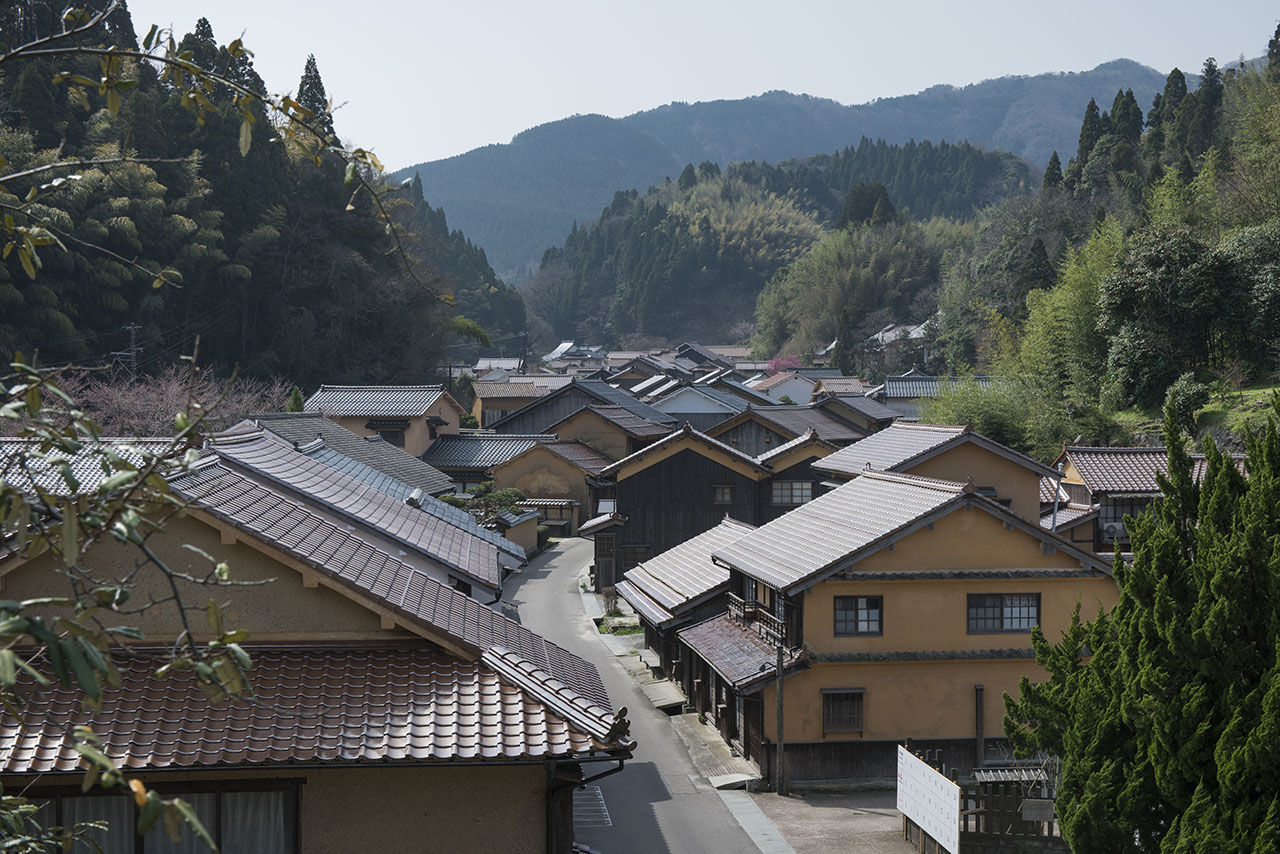 Built along an old highway through the mountains, the town of Ōmori has remained largely unchanged since the Edo period, when the Iwami Ginzan silver mine supported a thriving economy.
Built along an old highway through the mountains, the town of Ōmori has remained largely unchanged since the Edo period, when the Iwami Ginzan silver mine supported a thriving economy.
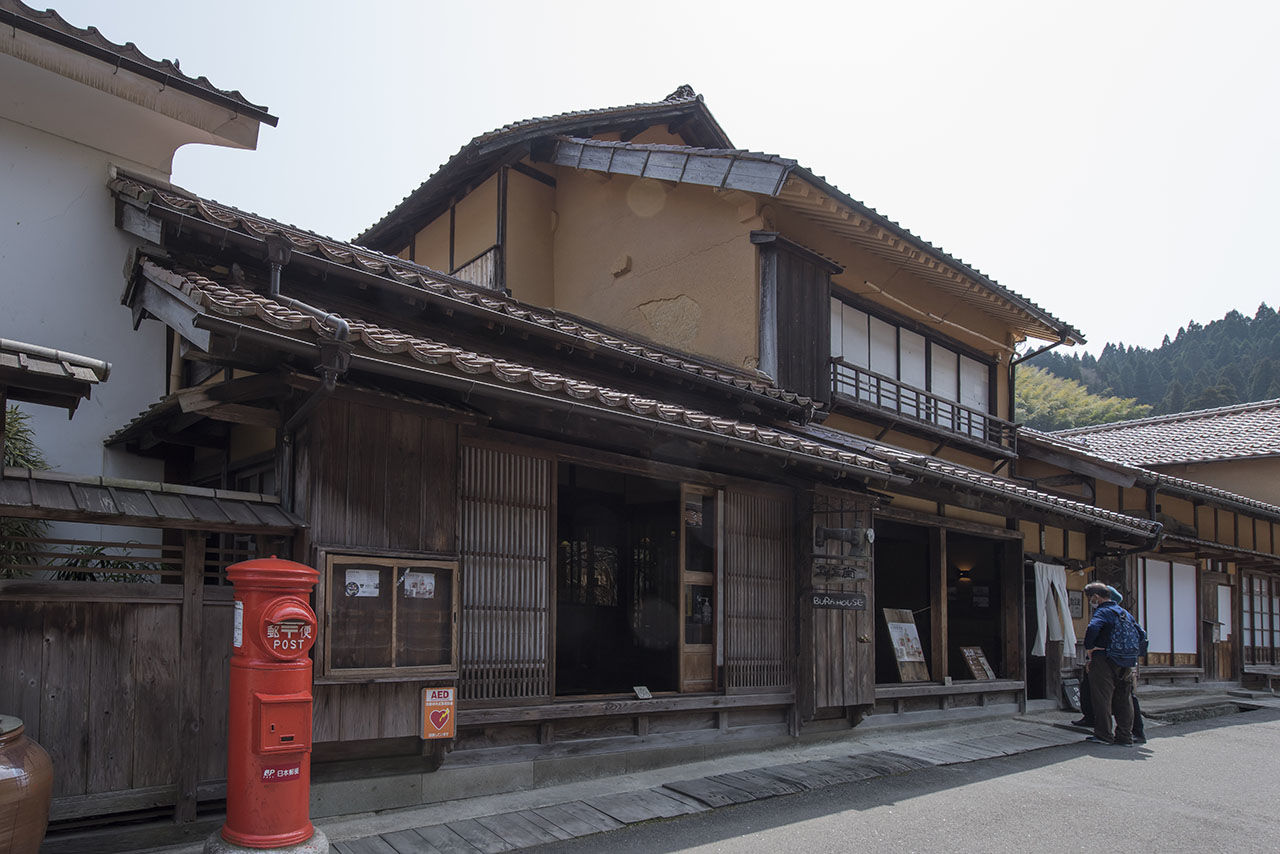 Gungendō’s Iwami Ginzan flagship store is situated along the old highway that runs through the center of Ōmori.
Gungendō’s Iwami Ginzan flagship store is situated along the old highway that runs through the center of Ōmori.
Restoring Culture Along with Structures
During the 1990s, Ōmori’s reputation as a destination for discerning travelers spread beyond Shimane Prefecture. The Matsubas reinvested the profits from their business into restoration projects. In addition to renovating and refurbishing the building where they opened their flagship store, they bought up other old homes in the neighborhood as they were vacated. They even saved a magnificent thatched-roofed farmhouse in neighboring Hiroshima Prefecture from demolition and moved it to Ōmori for preservation. In the process, they were discovering and building their own identity.
MATSUBA In those days, there was this image of provincial communities as backward, boring places to live. But it never seemed that way to me. Sure, the older residents are always apologizing to outsiders for their little backwater. But it’s a cornucopia of delicious food from land and sea, and it’s a beautiful area, with its flowering fields and starry nights, and in the old storehouses of the homes we bought, I discovered beautiful old ceramics, lacquerware, and textiles that the owners had carefully preserved over the generations, which were a great source of inspiration for me.
My motto is fukko zōshin [restore the old and create anew], and for me, this town is a perfect stage for that process of creating new value by reviving and restoring the old.
For example, when we took possession of the dilapidated old house diagonally across from Gungendō, we decided to restore it without modernizing it. We dispensed with electricity, gas, and modern plumbing and turned it into a kind of old-fashioned drawing room. At night, customers, employees, and members of the community gather around the sunken hearth and chat by candlelight. In the dark, it’s so quiet you can hear the trickle of water in the runnels, and it’s quite magical.
When we moved a big 260-year-old farmhouse here from Hiroshima Prefecture, we were really able to appreciate close-up all the craftsmanship that went into traditional domestic architecture, from the wood frame and plaster walls to the thatched roofs. In 1993, we held our first annual Country Doll Festival, which continued for ten years. During the daytime, we organized discussions among women from farming villages in the area, and in the evening we held a big banquet in the thatched-roofed farmhouse.
All the regional modernization projects of the rapid-growth era bypassed Iwami Ginzan, and for that reason the old town was preserved pretty much intact. Unlike all the rural communities that traded in their character for a transient economic stimulus, Ōmori stayed as it was, a decaying old provincial town, and I think in the end that was its salvation.
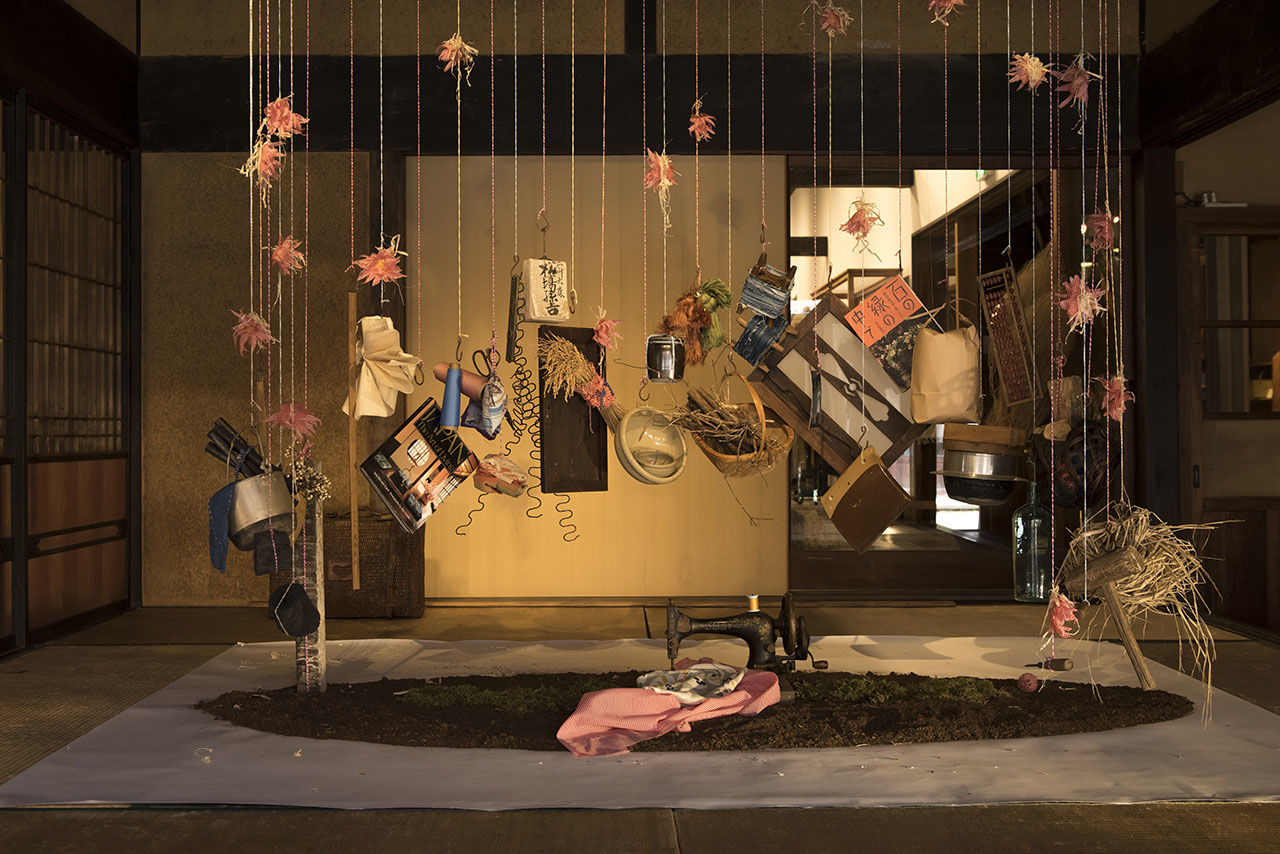 Display in the entryway of the Gungendō flagship store.
Display in the entryway of the Gungendō flagship store.
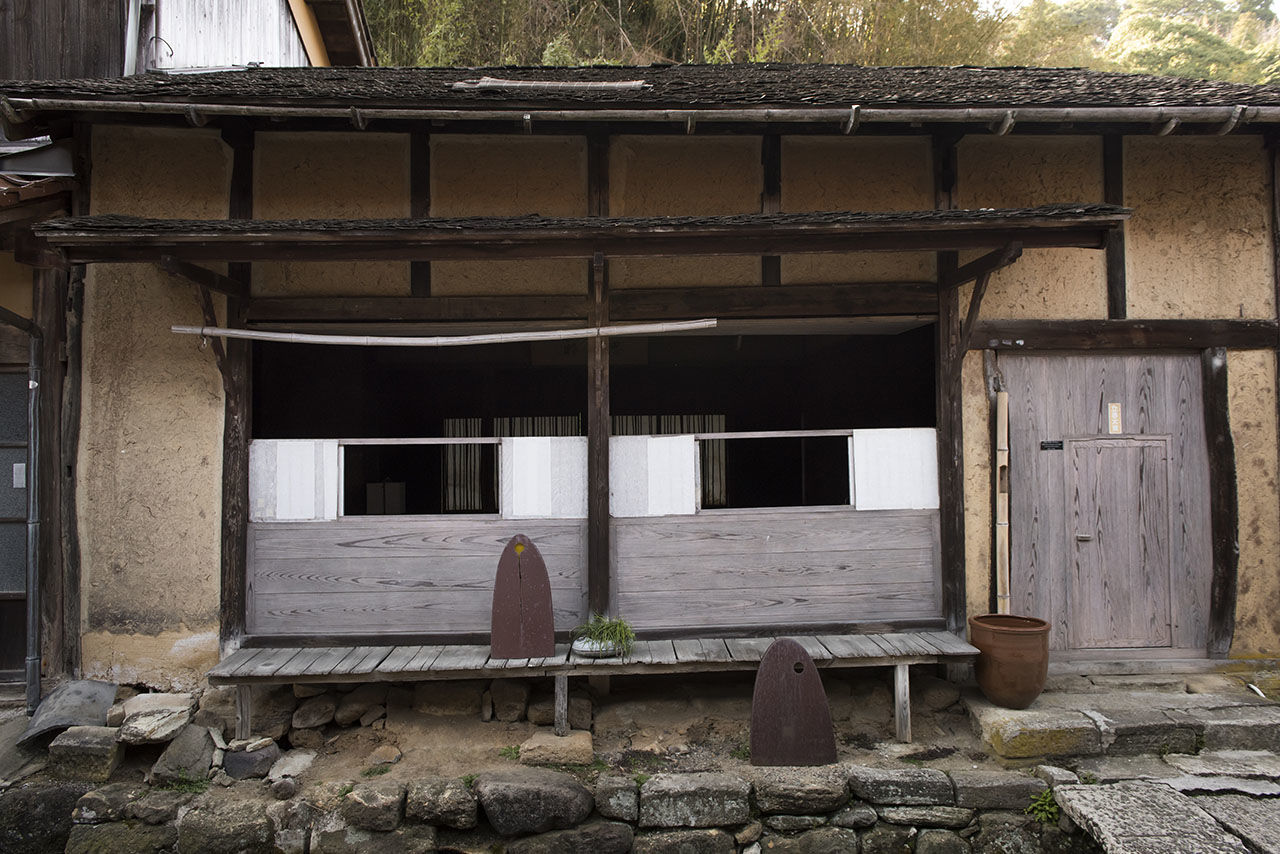 The traditional Japanese home across from the Gungendō is used as a drawing room. Matsuba deliberately left it without such modern amenities as electricity, gas, or running water.
The traditional Japanese home across from the Gungendō is used as a drawing room. Matsuba deliberately left it without such modern amenities as electricity, gas, or running water.
Birth of a Japanese Country Inn
In 1998, the couple purchased the Abe house (Abe-ke), also situated along the old highway that runs through town. By then, the 200-year-old samurai residence, designated a prefectural historic site, had been vacant for years.
MATSUBA The front door opened right onto a large earthen-floored doma. To the right were a series of tatami rooms. Straight ahead was the kitchen, and beyond the kitchen, a big storehouse. It was obviously a residence with a lot of class at one time, but really old and dilapidated—like a haunted house. Still, I never had a moment’s doubt about buying it.
I slept on the second floor of the storehouse so that I could devote all my attention to supervising the renovations. The first priority was fixing all the leaks and water damage. I was told it would be best to use new building materials to replace the plaster walls, but I put my foot down about that. To me, the plaster walls were what made the building a cultural asset, and I felt it was my duty to preserve the structure for future generations.
Restoring an old house is an extremely inefficient process. I had plenty of time to ask myself what was in it for me and what the point was in living there. Over time, I came to understand that, for me, restoration wasn’t just about renovating an old building; it was about reviving a way of life.
I wanted to put it to use in a way that would please the old house. In my mind, that meant reviving a way of life centered on preserving instead of discarding. This town is blessed with so many treasures that Japan’s cities have discarded, including a rich natural environment, a beautiful townscape, and a close-knit community. My dream was to take hold of each of those treasures, carefully polish them, and pass them on to the next generation.
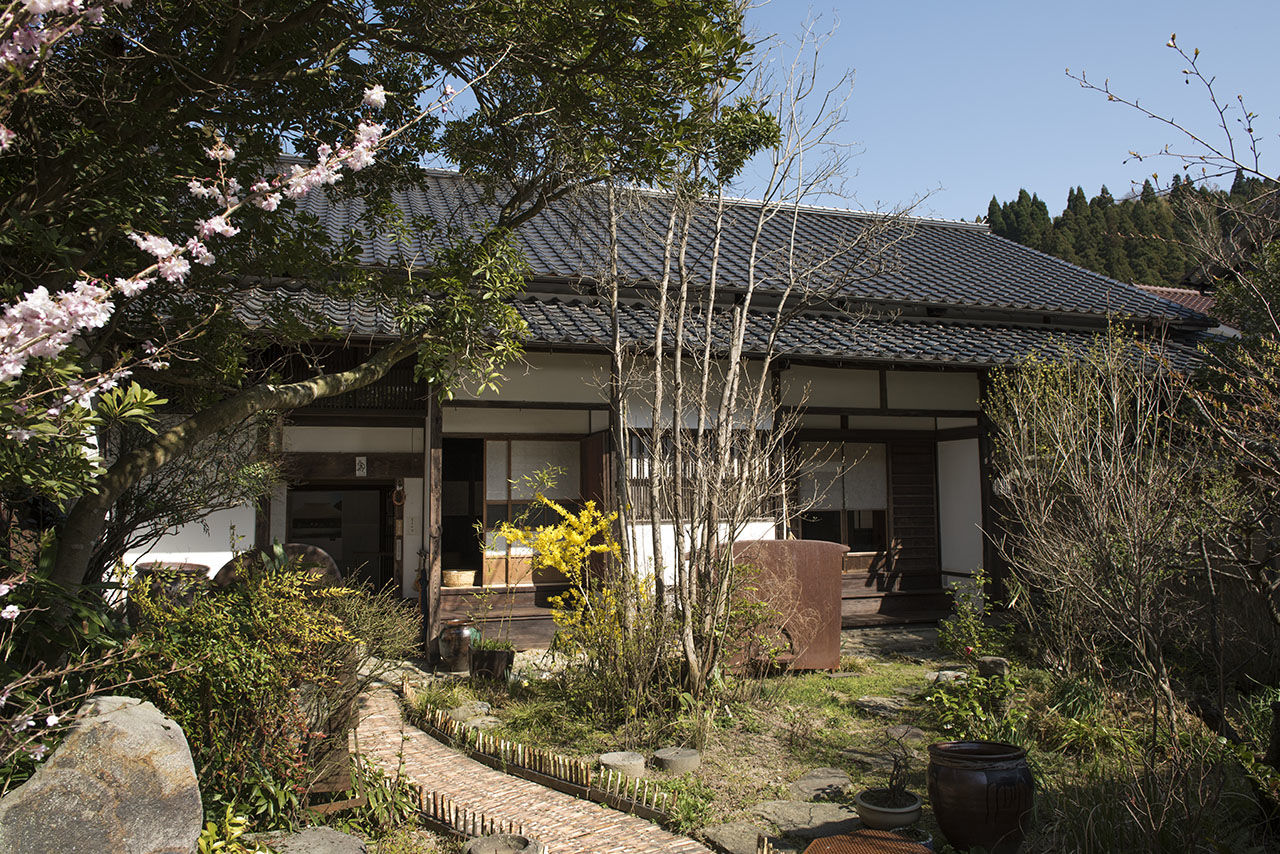 The front entrance to Takyō Abeke.
The front entrance to Takyō Abeke.
 The old house’s large clothing-storage room was converted into a guest room.
The old house’s large clothing-storage room was converted into a guest room.
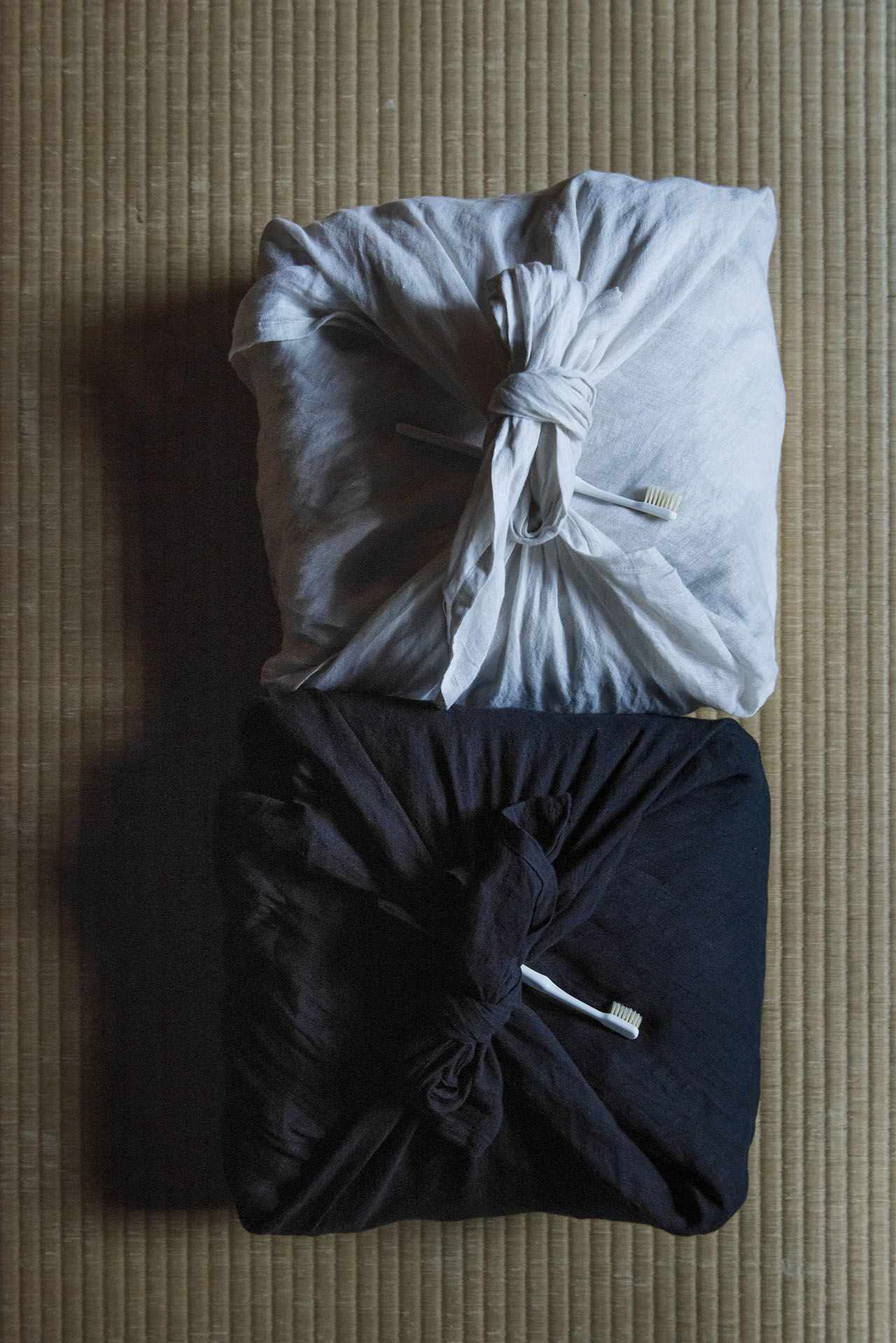 On arrival, each guest receives a package of overnight items, including pajamas and a boar-bristle toothbrush.
On arrival, each guest receives a package of overnight items, including pajamas and a boar-bristle toothbrush.
Preserving the Town for Future Generations
The Abe house opened for business as Takyō Abeke, a Japanese country inn, in 2008, a full decade after Matsuba acquired the property. Since then, she has divided her time between the inn, where she entertains guests in the evening and morning, and company headquarters, where she spends the rest of the day.
MATSUBA My husband and I have now bought and restored a total of ten houses in Ōmori. One is used as an employee dormitory. We renovated a beautiful old house that originally belonged to a local physician, and this past April we began renting it out as a cottage accommodation on a nightly basis. We named it Tadaima [I’m Home!] Katōke. Like Abeke, it has a doma and a kamado [traditional wood-burning stove] in the kitchen, along with everything guests need to cook and serve their own meals.
Financially speaking, all this restoration may not be the smartest way to invest our money, especially given the challenges of selling apparel in today’s changing business environment. But my husband and I really want to preserve this community’s historic townscape for posterity. As we see it, our most precious assets are all the wonderful people we’ve met while living and working in this town.
I haven’t had one bad experience with our guests at Abeke. We have a big table next to the kamado, where we serve dinner and breakfast to our guests, and I make a point of dining with them. A couple might arrive looking tense or reserved, but the ice always melts once they’ve eaten with everyone around the table and spent a night in our homey rooms.
Nowadays, there are hotels and inns and guest houses of all kinds popping up around Japan. There’s intense price competition at one end and incredibly luxurious, expensive accommodations at the other. Our rates aren’t what you’d call cheap, but we’re not pretentious; our specialty is home cooking, not fine dining. A guest once told me that she liked the inn because it didn’t “smell of money.” Combining hospitality with the preservation of these old buildings is hard work, but compliments like that keep me and my staff going.
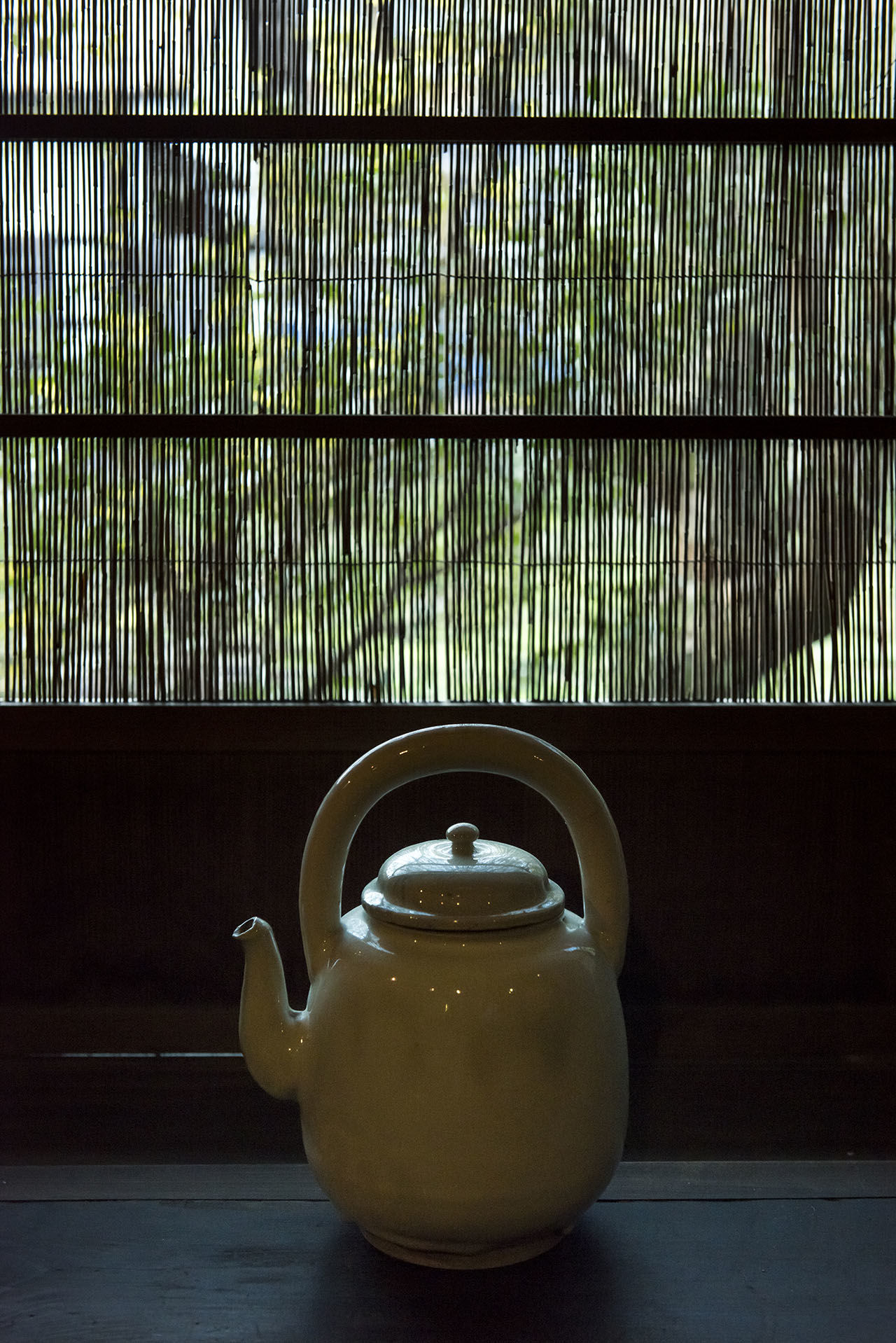 The soft light and deep shadows of an old Japanese house have a beauty all their own.
The soft light and deep shadows of an old Japanese house have a beauty all their own.
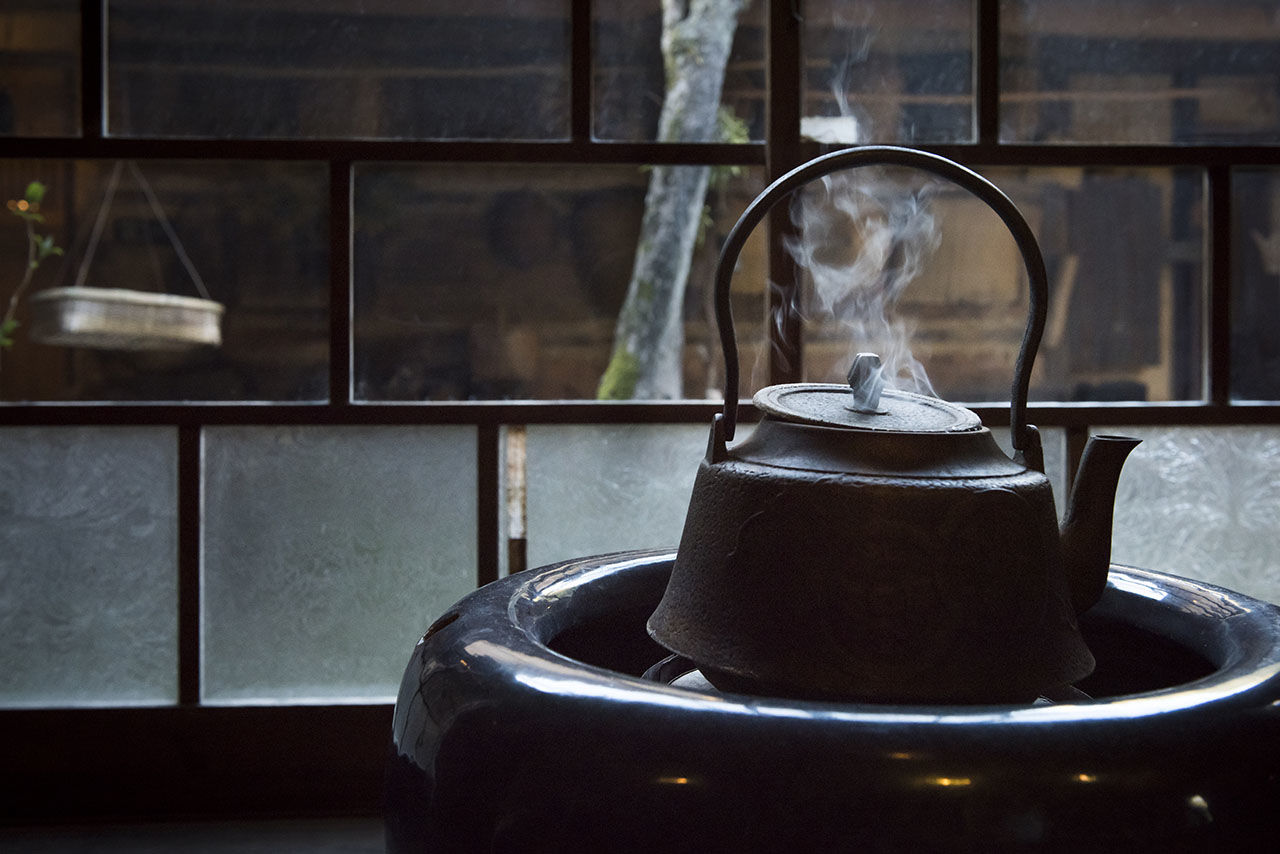 From autumn to early spring, a hibachi brazier keeps the cold at bay.
From autumn to early spring, a hibachi brazier keeps the cold at bay.
 These lattice doors have been fitted with a patchwork of old glass recovered from discarded building materials.
These lattice doors have been fitted with a patchwork of old glass recovered from discarded building materials.
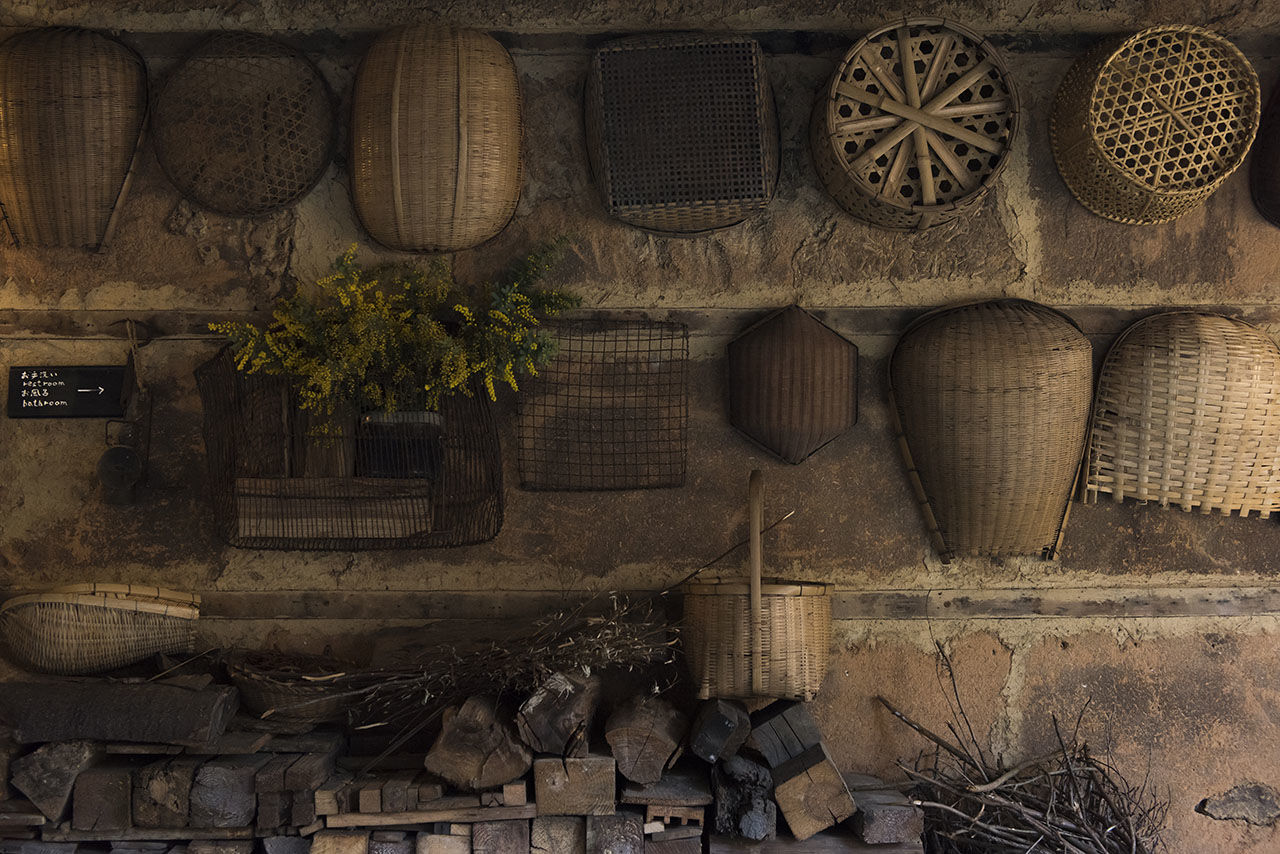 Traditional Japanese basketry hangs from the plaster walls of the storehouse.
Traditional Japanese basketry hangs from the plaster walls of the storehouse.
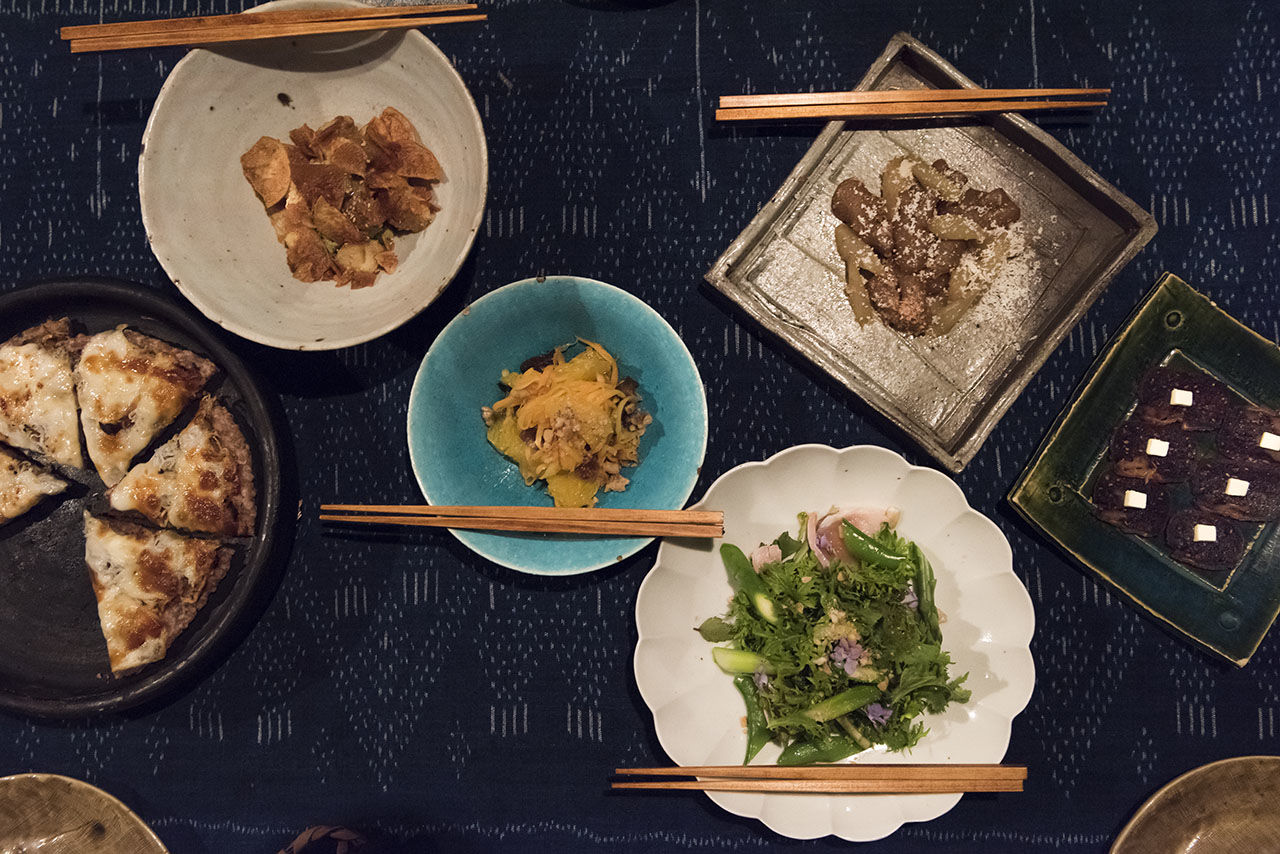 For dinner, a dizzying array of homestyle dishes featuring local and seasonal ingredients.
For dinner, a dizzying array of homestyle dishes featuring local and seasonal ingredients.
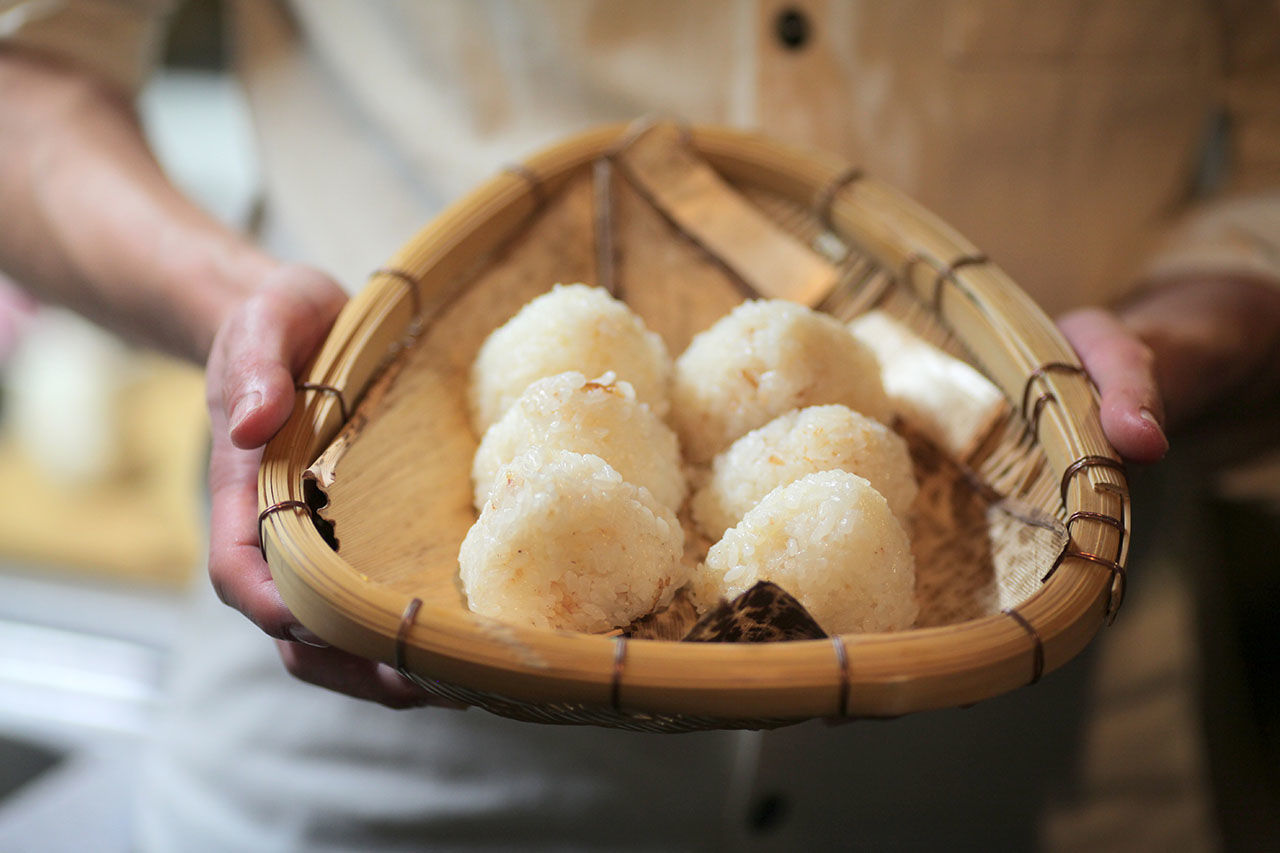 Nothing says “home sweet home” like these old-fashioned musubi, made from rice cooked in the kamado. (© Takyō Abeke)
Nothing says “home sweet home” like these old-fashioned musubi, made from rice cooked in the kamado. (© Takyō Abeke)
The brand name Gungendō is taken from a Chinese word for when many people share their knowledge together and build a new world. Takyō is also from Chinese, and means a place that is not one’s hometown, but is equally welcoming.
MATSUBA We currently have fifty employees at our head office. Naturally, a lot of them are from the area, but we’ve also managed to attract people from outside the prefecture and even overseas, including China and Taiwan. It’s a lifestyle, not just a job. We grow rice and other crops in the surrounding fields, and one of our employees even has a license to trap wild boar. It’s especially gratifying when young people in their twenties and thirties move to Ōmori to work at our company.
Over the past decade, the town’s population has fallen from 460 to 400. Depopulation is a problem facing rural communities all over Japan. But the future looks pretty bright for Iwami Ginzan because younger people are moving in. Families with young children make up a growing percentage of our total population. That includes my own three daughters, who are raising children of their own now. I’m a grandmother of eight!
Living in Iwami Ginzan, I’ve become very sensitive to the changing seasons. As a newcomer, I was initially overwhelmed by the San’in region’s cold, gloomy winters. But by March, there are signs of spring everywhere; the trees are budding, the skies are clearing. Then comes summer with its sense of liberation, autumn with its rich bounty, and finally back to the stillness of winter. Each season offers its own simple but varied pleasures, woven into the life of the community. There’s no place on earth I would rather live.
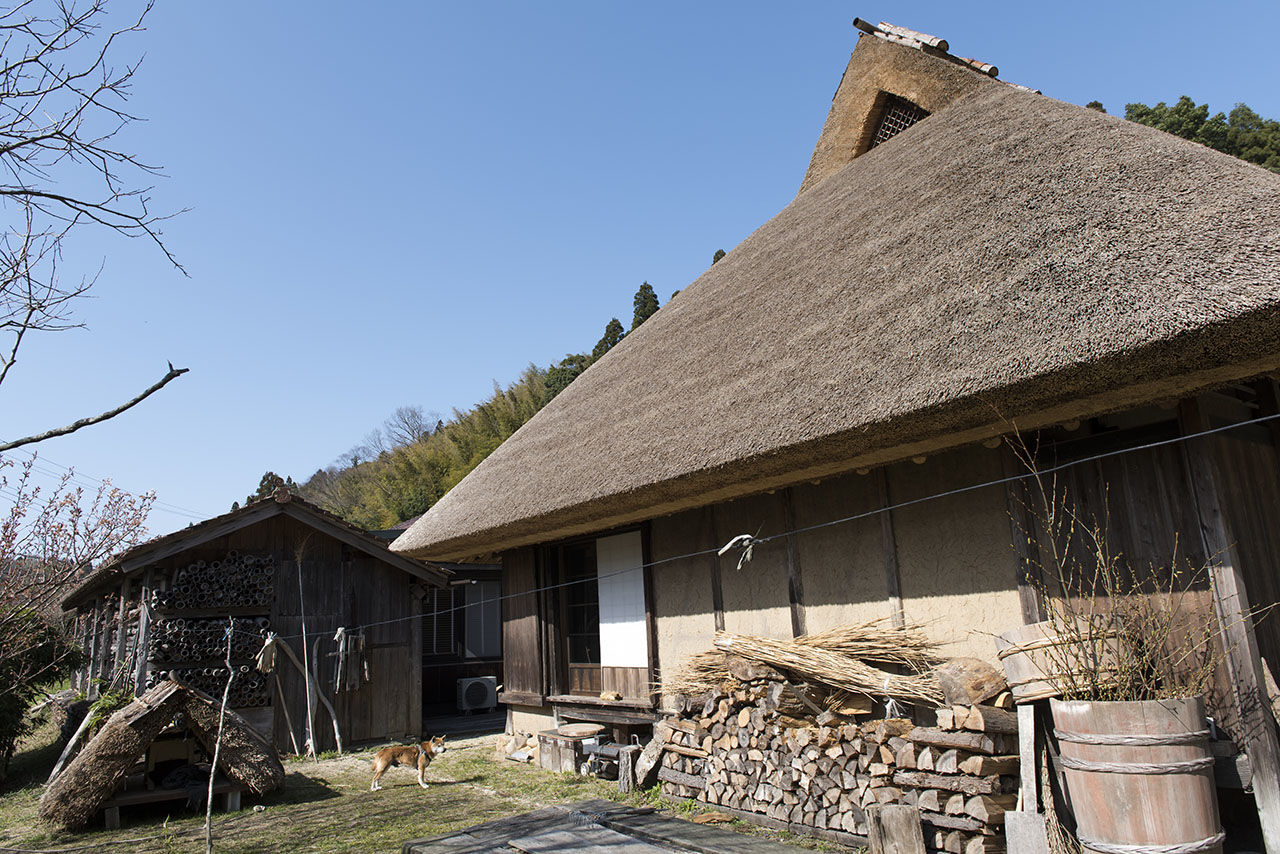 An old thatched-roof farmhouse lends atmosphere to the headquarters of Iwami Ginzan Seikatsu Bunka Kenkyūsho.
An old thatched-roof farmhouse lends atmosphere to the headquarters of Iwami Ginzan Seikatsu Bunka Kenkyūsho.
 Matsuba Tomi (right) and her husband Daikichi with staff at the head office of Iwami Ginzan Seikatsu Bunka Kenkyūsho.
Matsuba Tomi (right) and her husband Daikichi with staff at the head office of Iwami Ginzan Seikatsu Bunka Kenkyūsho.
Takyō Abeke
Address: 159-1 Ha, Ōmori-chō, Ōda, 694-0305, Shimane Prefecture
Phone: +81-(0)854-89-0022
Website: http://www.takyo-abeke.jp/english/
Gungendō Iwami Ginzan flagship store
Address: 183 Ha, Ōmori-chō, Ōda, 694-0305, Shimane Prefecture
Phone: +81-(0)854-89-0022
Website: https://www.gungendo.co.jp/lp/details/001147.php
(Originally written in Japanese. Photos by Kusumoto Ryō.)
tourism World Heritage food Washoku cuisine Breakfast Around Japan: A Culinary Adventure Iwami Ginzan San'in Chūgoku
